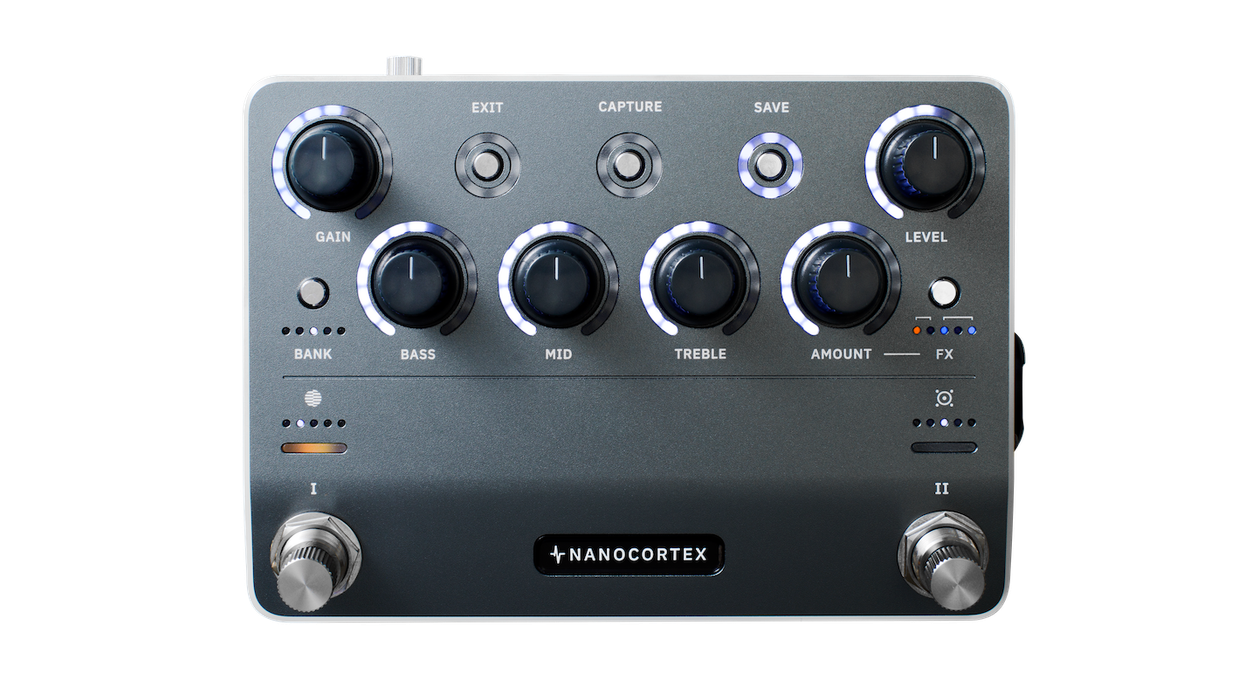If fate hadn’t intervened, Dethklok’s newest album, Dethalbum IV—the first since 2012’s Dethalbum III—probably would’ve sounded quite different than it does. That’s because Dethklok mastermind Brendon Small would’ve enlisted his tried-and-true equipment: enviable guitars up the wazoo, a go-to Marshall cabinet with Celestion speakers, and at least a few mics. Instead, some thieves saw to it that Small take a different approach when they robbed his home studio.
“I think some people saw me carrying guitars back and forth and crowbarred my studio door, so my main A-league guitars were kaput,” Small recalls somberly. After the robbery, he moved everything out and went undercover. “I went into the modern world of direct recording,” he explains. “It pushed the record into a different place than my normal ‘safety gear’ would’ve.” In the theater world, one might raise their hands above their heads and exclaim gleefully, “unexpected results!”—the inevitable and, often, positive outcomes of unintended actions.
Metalocalypse: Dethklok | Gardener of Vengeance (Lyric Video) | Adult Swim
If anyone knows a thing or two about unexpected results (and theatrics), it’s Brendon Small. Having cultivated a career that he refers to as “whatever it is that I do for a living,” Small somehow managed to marry a Berklee College of Music guitar education with Emerson College comedy-writing classes to create a wildly unique career path for himself. Born in 1975, Small first gained widespread recognition as the creator, writer, and co-producer of the animated television series Home Movies, which aired from 1999 to 2004. The show followed the humorous exploits of a young boy named Brendon, his friends, and their amateur filmmaking endeavors. Small’s most notable achievement, however, came with the creation of Adult Swim’s animated cult classic Metalocalypse. It was the medium through which he finally, successfully, combined his songwriting and comedy-writing talents.
Premiering in 2006 and running for four seasons, Metalocalypse depicted the fictional band Dethklok embarking upon absurdly dark adventures as the self-proclaimed “heaviest metal band ever created.” Metalocalypse blended humor, satire, and heavy metal culture with sharp musical performances and scores, creating a unique and, ultimately, beloved experience for metalheads and animation fans alike. Small created and produced the series, provided the voices for several main characters, and composed most of the music featured in the show, including the tracks performed by Dethklok. In August, nearly a decade since the cliffhanger ending of The Doomstar Requiem – A Klok Opera in 2013, Metalocalypse finally returned with a full-length animated movie. Written and directed by Small, Metalocalypse: Army of the Doomstar brings Nathan Explosion (vocals), Skwisgaar Skwigelf (lead guitar), Toki Wartooth (rhythm guitar), William Murderface (bass), and Pickles (drums) back together for another action-packed journey.
Brendon Small's Gear
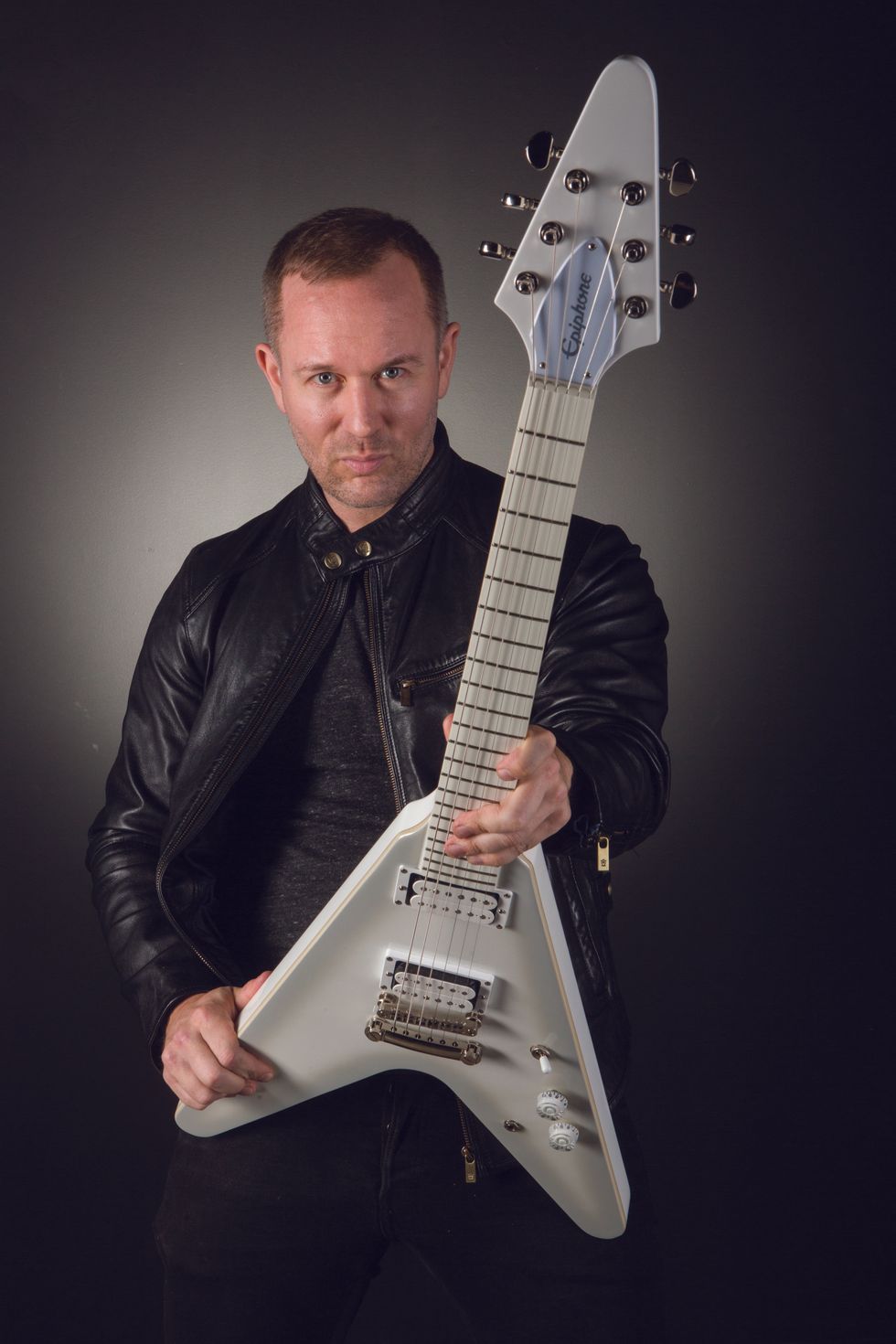
Dethklok creator Brendon Small resurrected the animated band this year after a decade-long hiatus.
Guitars
- Epiphone Brendon Small GhostHorse Explorer
- Fender Jazz Bass
- Gibson Explorer
- Gibson Snow Falcon Flying V
- Ibanez JS240PS with Sustainiac mod
- Ibanez Tom Quayle Signature TQM1
Amps & Effects
- Neural DSP Quad Cortex Quad-Core Digital Effects Modeler
Strings & Picks
- Dunlop DEN09544 Electric Nickel .095–.044
- Dunlop Ultex 1.14mm
Released in conjunction with the movie, Dethalbum IV is a bludgeoning aural assault that showcases Small’s knack for combining glossy production with “some of the ugliest sounds” he could conjure. “There’s this melding of the putrid and the beautiful that I’m trying to smash together,” he attests. Songs like “Aortic Desecration,” “Gardner of Vengeance,” and “Poisoned by Food” may be lyrically silly and satirical—even gross—but the music is serious business, on par with Mastodon, Lamb of God, and other like-minded metal bands who combine cunning songcraft with stunning instrumental proficiency. Riff-heavy, melodic, and merciless, Dethalbum IV is an expertly crafted record where death growls are overtaken by soaring melodies and vice versa, guitar histrionics are undergirded by monstrous grooves courtesy of drummer Gene Hoglan, and the production aesthetic, perhaps largely due to Small’s unintended switch to direct recording, is easily Dethklok’s slickest yet.
Simply put, Dethalbum IV is a fierce musical statement that deftly combines hook-laden melodicism with fist-pumping metal. “There was a point where I was listening to this record, and I’m standing back and going, ‘This is much more aggressive and much heavier than a Dethklok record normally,’” Small explains. “[Producer] Ulrich Wild really landed the bird with this one, getting it to that aggressive and modern place, which is somewhere between Cannibal Corpse and Def Leppard’s Hysteria.” Small calls this amalgamation of influences “stuff that hits your DNA” when you’re a kid. “The impressionable parts stay with you,” he admits.
“Doing a Dethklok show is like storming the beach at Normandy during a laser tag battle.”
Despite being Dethklok’s de facto studio guitarist, what really sets Small apart from many other contemporary shredders is that he considers himself a writer first and foremost. “Ever since I had a guitar, I was always trying to write music on it,” he says. “Even when I couldn’t play it, I would just start to write ideas or lines or a riff on the lower strings.” Composition first, and then form-fit around it, he likes to say. “I like to come up with stuff, either in the script form or with some kind of instrument hanging around, from keyboard to guitar to spoons—whatever I can do.”
Even though he ultimately gravitated towards traditional recording techniques (like a mic in front of a speaker cab), Small admits that having digital options early on made his guitar and comedy-writing career possible. “I don’t think I could have made music unless I had that Line 6 POD in the very beginning,” he admits. “I’m a writer who happens to play guitar, and I have to find a way to mangle these sounds into something that makes sense. I’ve got to get the sounds down in the big notepad that is the Pro Tools session.”
Though his return to direct recording was a matter of necessity, it was influential to the overall sound of Dethalbum IV, and Small asserts that he tried to let the music unfold naturally. “At some point, I look at the record and go, ‘Whatever this is, I can’t stop it from being what it needs to be,’” he says. “There’s something in the pineal gland that’s driving it from the astral plane pushing it forward.” Ultimately, he attests, the Dethklok characters start to take over in his mind: “Nathan Explosion is making decisions, and Skwisgaar wants more notes, and I’m like, ‘Okay, I’ll see if I can make it work because I’m not as good as that guy,’ so I have to really work it.”
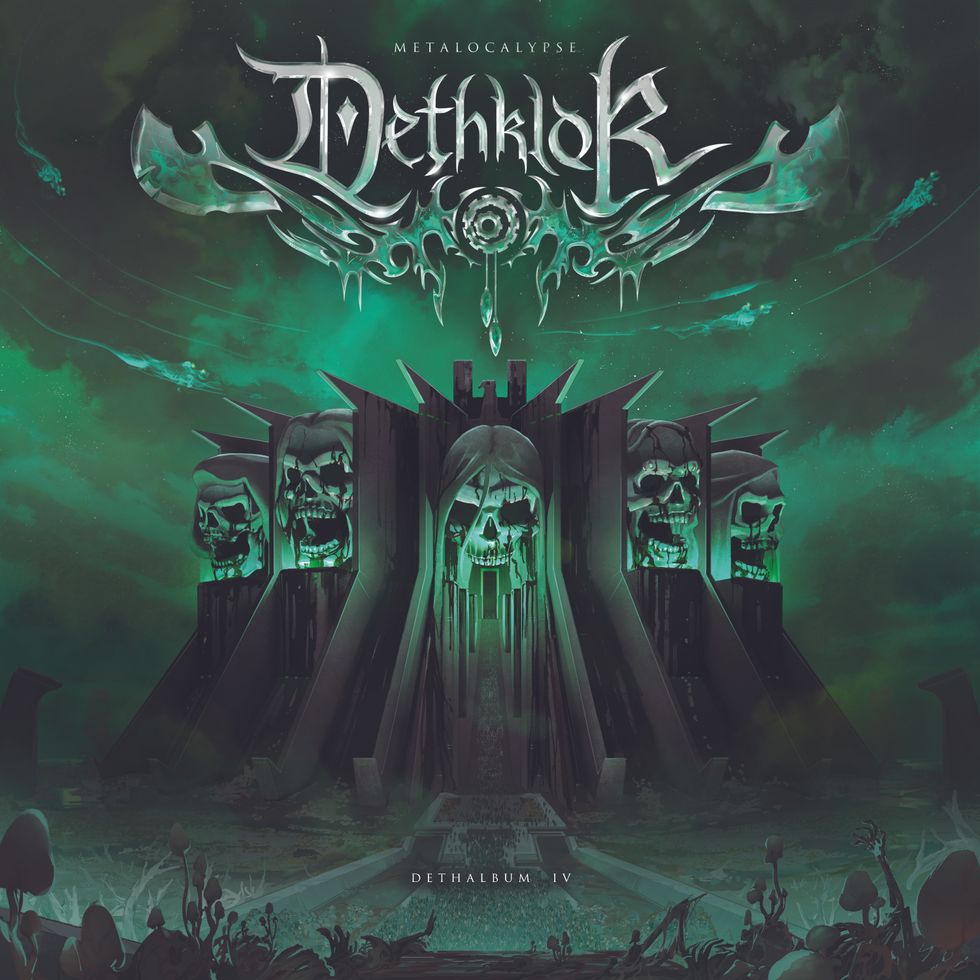
After thieves plundered his home studio, Small decided to record Dethalbum IV without any amps—a homecoming of sorts for the early Line 6 POD user.
Speaking of Skwigelf, Small cites one big difference between Dethalbum IV and previous Dethklok records. “Now Skwisgaar has a whammy bar and 24 frets,” he chuckles. “There are dive-bombs on this record that I never did before, but I wanted to be able to do what Jeff Beck did, get a little bit more expressive—go from the fixed bridge to the whammy. I’ve had guitars with it, but I just wanted to finally put them on the record. There’s just a little bit more goose in it.”
“I think if you’ve decided to jump onto the carnival train that is your own creative life, you have to bob, weave, fail, and succeed all in a matter of 20 minutes every single day.”
Small’s cross-section of music and comedy began during his time at Boston’s Berklee College of Music in his junior year. “I started having forward thoughts of my impending doom, like, ‘I’m going to graduate, and what the hell am I going to do with this guitar? I love it, I hate it. What am I going to do?’” he recalls. He was also having a hard time corralling the school’s curriculum into a solid identity for his own guitar playing. “I’m in a jazz chord lab figuring out what Joe Pass used to do. Then, I’m thinking about Danny Gatton in my country lab, and then I have advanced concepts of prog-rock where I’m learning about Gentle Giant, and then I’m in traditional harmony trying to mimic an étude or learn how to write a chorale, or voice leading, or figured bass, or any of that cool stuff, and I’m having some kind of musical identity crisis and fearing the end of school and the real world.”
Instead of going the weekend-warrior route via gigs posted on a corkboard at Berklee, Small pursued internships at two different jingle houses in New York. One was David Horowitz Music Associates, and the other was Michael Levine Music. “Michael Levine wrote the Kit Kat theme: ‘Give me a break, give me a break…,’” Small sings. He soon realized that his roommate Jed, from Emerson College, had what he deemed a much cooler internship with Conan O’Brien.

For real-life concert appearances, Small brings Dethklok to life alongside an all-star band that includes Mike Keneally (guitar), Nili Brosh (guitar), Bryan Beller and Pete Griffin (bass), and Gene Hoglan (drums).
Small’s fly-on-the-wall experience tagging along with Jed at the late-night talk show prompted him to draw up a plan for his future. “I went back to Berklee in my final year, and I started taking writing classes along with Emerson [students],” he explains. His assignments included writing a spec script and a sample episode of a TV show, and demonstrating he could write character, story, jokes, and tone. “I saw that it’s like a good piece of music,” he says. “You’ve got an A theme, a B theme, and maybe a C theme, and how do they all intertwine into this final pocket at the very end?” Conceptually and structurally, it made sense for Small: “It was like the études I was studying. There was something baroque about it that I understood.”
These combined college experiences ultimately led Small to start thinking about the intersections of songwriting, screenwriting, and acting, and how that combination might be a viable career path for him. “If you can make sense of your guitar enough to score music, I think ultimately that’s a battle of you versus yourself,” he says. “Once you prove that you can take this foreign object [a guitar] and make it a part of you, you can do that with anything. You just have to learn where the knobs are, where the frets are, how to bend notes, and how to find your rhythm. Everything’s a storyline, from a piece of music to a piece of media. Whatever it is, there’s a beginning, a middle, and end. Ultimately, it did me well to think of them as similar things.”
“Everything’s a storyline, from a piece of music to a piece of media. Whatever it is, there’s a beginning, a middle, and end. Ultimately, it did me well to think of them as similar things.”
To bring Dethklok to life for this year’s Babyklok Tour alongside Babymetal, Small enlisted heavyweights Mike Keneally (guitar), Nili Brosh (guitar), Bryan Beller and Pete Griffin (bass), and Hoglan (drums). While preparing to hit the road, Small was focused on the aspects of live performance that the concert experience demands of him. “Doing a Dethklok show is like storming the beach at Normandy during a laser-tag battle,” he chuckles. “There’s lights and craziness and fog and haze, and you’re like, ‘Where am I?’ There’s a lot of muscle memory and position memory that has to be there. I have to think about the lyrics, the vocalizing, and if all I can see is the low E string, and I’m on the high E string, I have to trust that my hand remembers where it needs to be.”
Circling back to “whatever it is I do for a living,” Small offers the following wisdom for those interested in pursuing an artistic life: “I think if you’ve decided to jump onto the carnival train that is your own creative life, you have to bob, weave, fail, and succeed all in a matter of 20 minutes every single day,” he says. “How do you stand back and try to conceptualize and solve a problem? I think that’s what makes it fun, and treacherous, and terrifying, and filled with failure, and a little bit of success.”
YouTube It
Dethklok shreds a live performance of "Thunderhorse" for the Adult Swim Festival Block Party, combining thrilling Metalocalypse-style animation with furious technical performances.
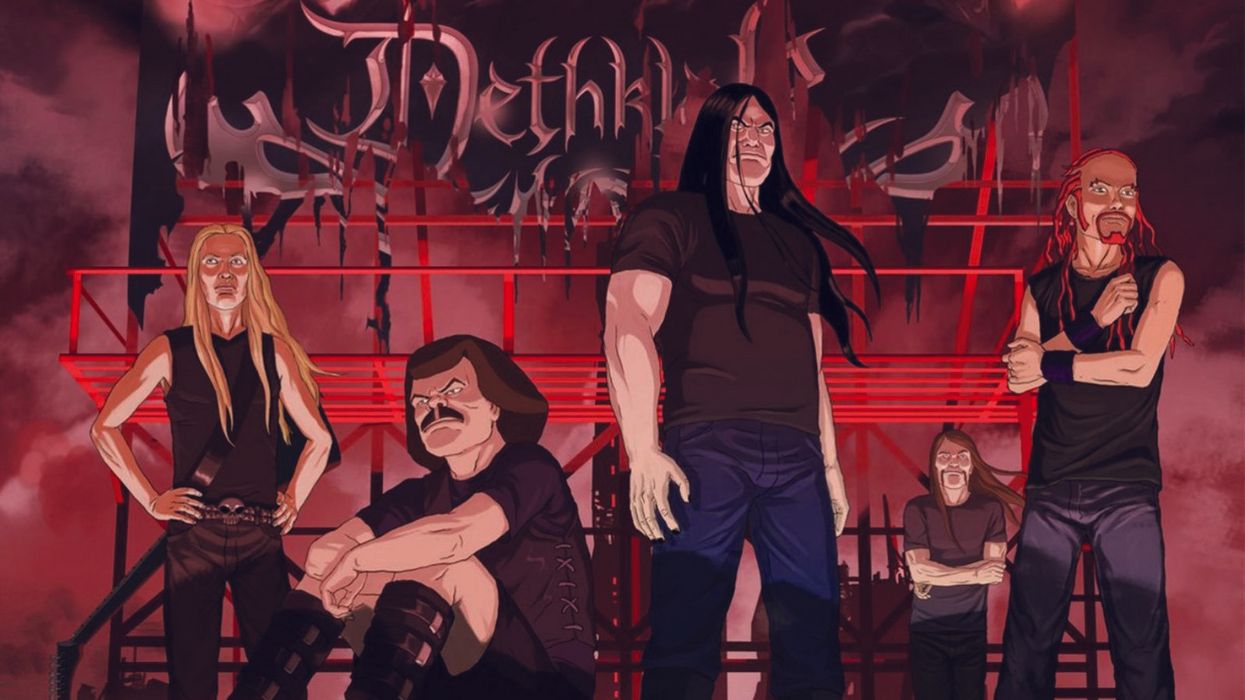

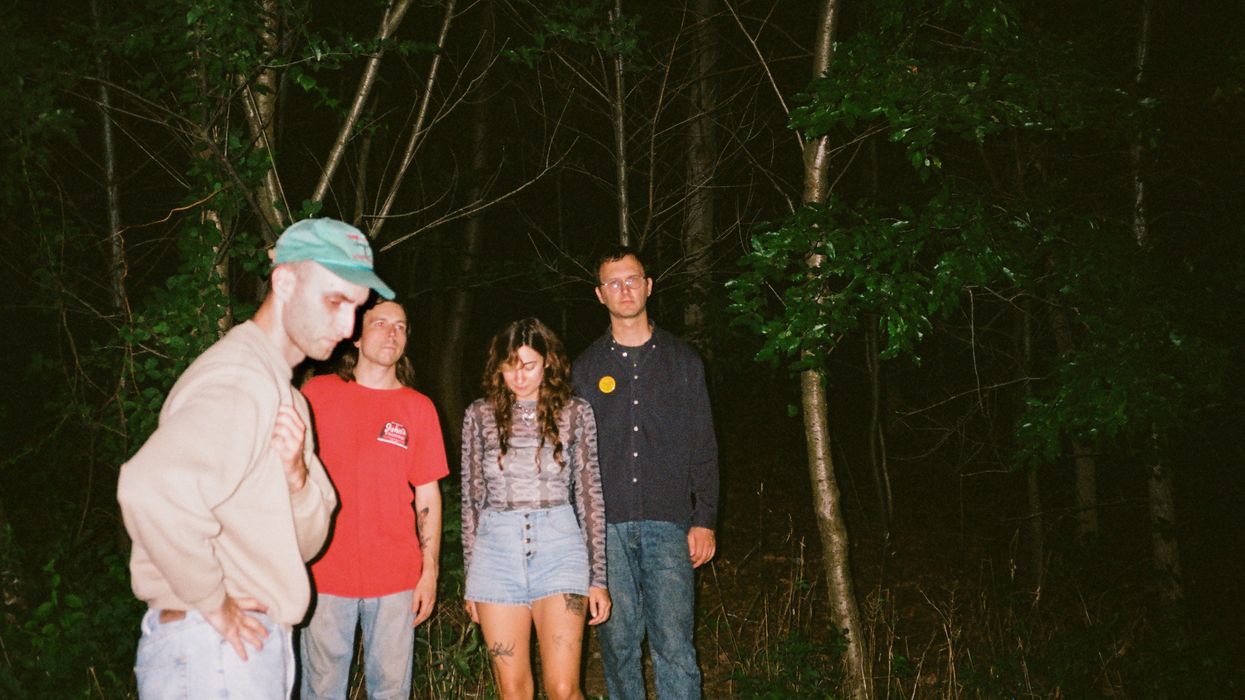
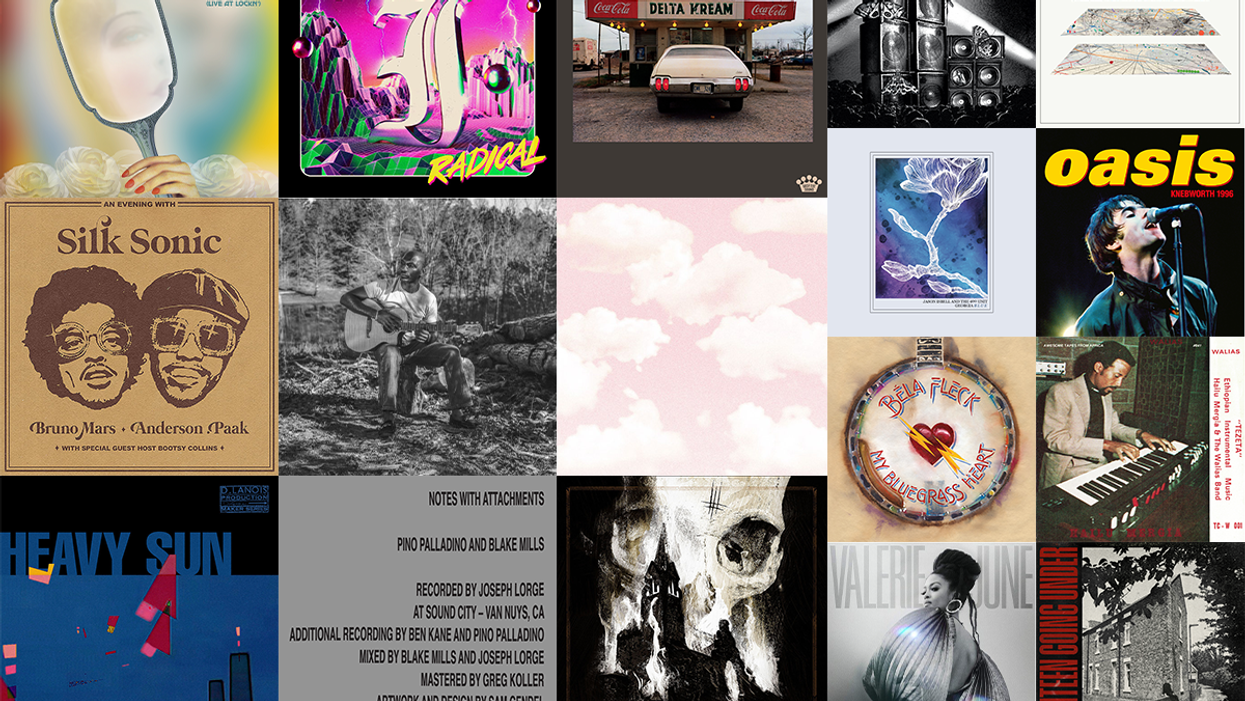
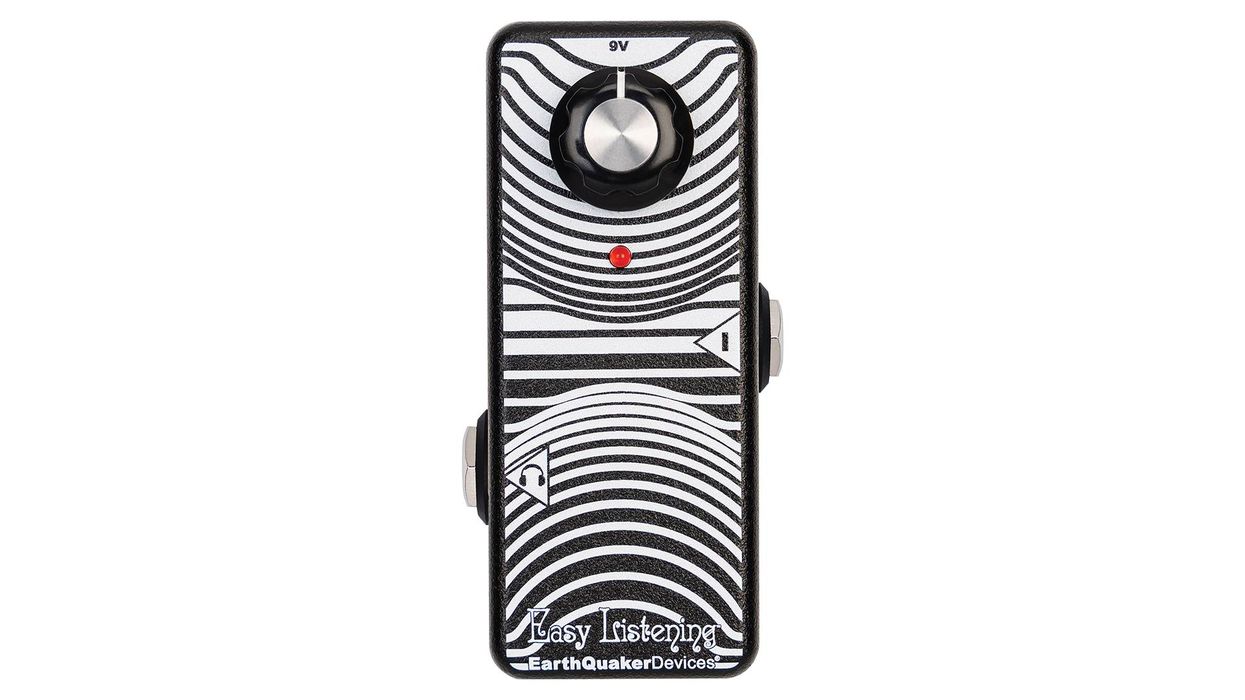





![Devon Eisenbarger [Katy Perry] Rig Rundown](https://www.premierguitar.com/media-library/youtube.jpg?id=61774583&width=1245&height=700&quality=70&coordinates=0%2C0%2C0%2C0)

